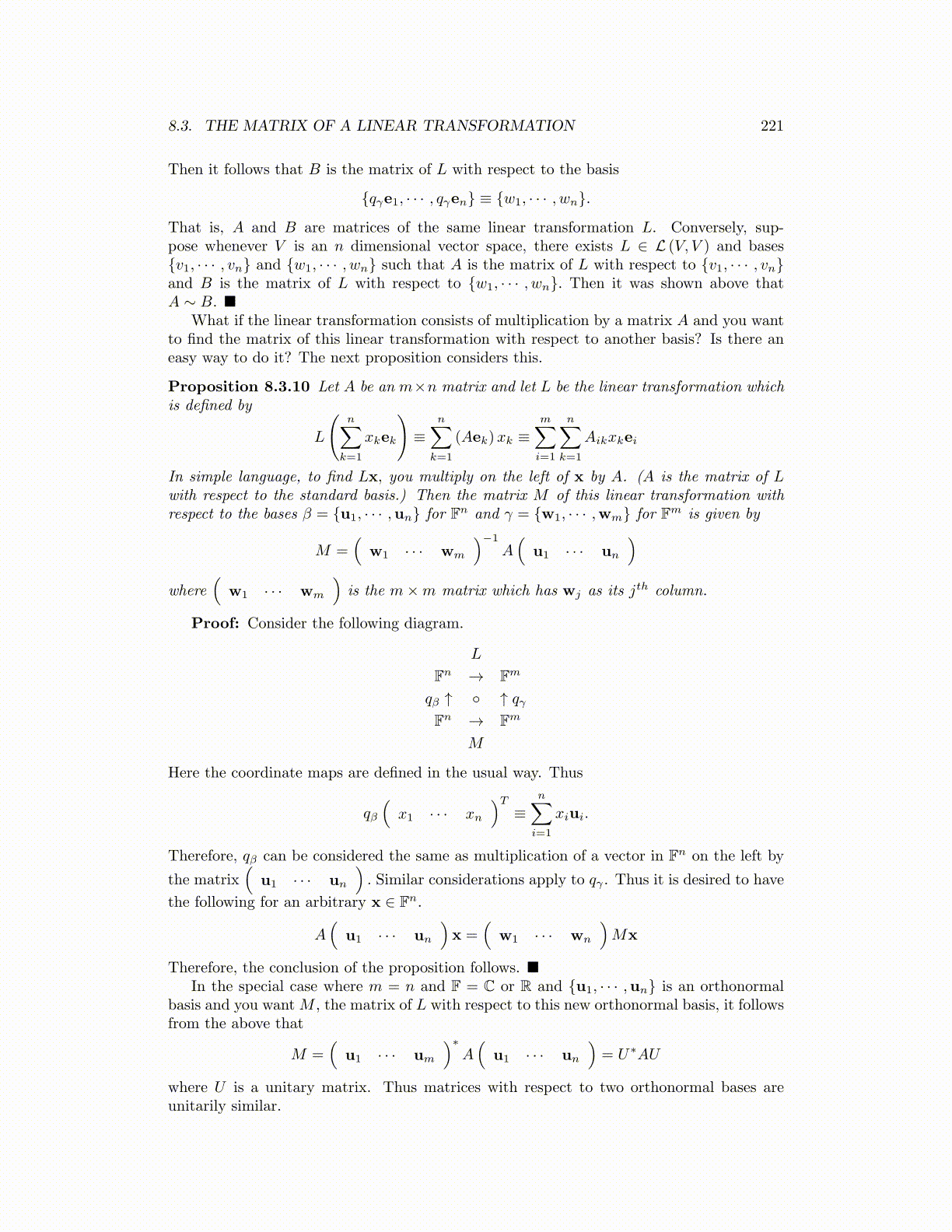
8.3. THE MATRIX OF A LINEAR TRANSFORMATION 221
Then it follows that B is the matrix of L with respect to the basis
{qγe1, · · · , qγen} ≡ {w1, · · · , wn}.
That is, A and B are matrices of the same linear transformation L. Conversely, sup-pose whenever V is an n dimensional vector space, there exists L ∈ L (V, V ) and bases{v1, · · · , vn} and {w1, · · · , wn} such that A is the matrix of L with respect to {v1, · · · , vn}and B is the matrix of L with respect to {w1, · · · , wn}. Then it was shown above thatA ∼ B. ■
What if the linear transformation consists of multiplication by a matrix A and you wantto find the matrix of this linear transformation with respect to another basis? Is there aneasy way to do it? The next proposition considers this.
Proposition 8.3.10 Let A be an m×n matrix and let L be the linear transformation whichis defined by
L
(n∑
k=1
xkek
)≡
n∑k=1
(Aek)xk ≡m∑i=1
n∑k=1
Aikxkei
In simple language, to find Lx, you multiply on the left of x by A. (A is the matrix of Lwith respect to the standard basis.) Then the matrix M of this linear transformation withrespect to the bases β = {u1, · · · ,un} for Fn and γ = {w1, · · · ,wm} for Fm is given by
M =(
w1 · · · wm
)−1
A(
u1 · · · un
)where
(w1 · · · wm
)is the m×m matrix which has wj as its jth column.
Proof: Consider the following diagram.
L
Fn → Fm
qβ ↑ ◦ ↑ qγFn → Fm
M
Here the coordinate maps are defined in the usual way. Thus
qβ
(x1 · · · xn
)T≡
n∑i=1
xiui.
Therefore, qβ can be considered the same as multiplication of a vector in Fn on the left by
the matrix(
u1 · · · un
). Similar considerations apply to qγ . Thus it is desired to have
the following for an arbitrary x ∈ Fn.
A(
u1 · · · un
)x =
(w1 · · · wn
)Mx
Therefore, the conclusion of the proposition follows. ■In the special case where m = n and F = C or R and {u1, · · · ,un} is an orthonormal
basis and you wantM , the matrix of L with respect to this new orthonormal basis, it followsfrom the above that
M =(
u1 · · · um
)∗A(
u1 · · · un
)= U∗AU
where U is a unitary matrix. Thus matrices with respect to two orthonormal bases areunitarily similar.